Discover 35 hidden attractions, cool sights, and unusual things to do in Ankara (Turkey). Don't miss out on these must-see attractions: Anıtkabir, Museum of Anatolian Civilizations, and Erimtan Archaeology and Arts Museum. Also, be sure to include Kocatepe Mosque in your itinerary.
Below, you can find the list of the most amazing places you should visit in Ankara (Ankara).
Table of Contents
Anıtkabir
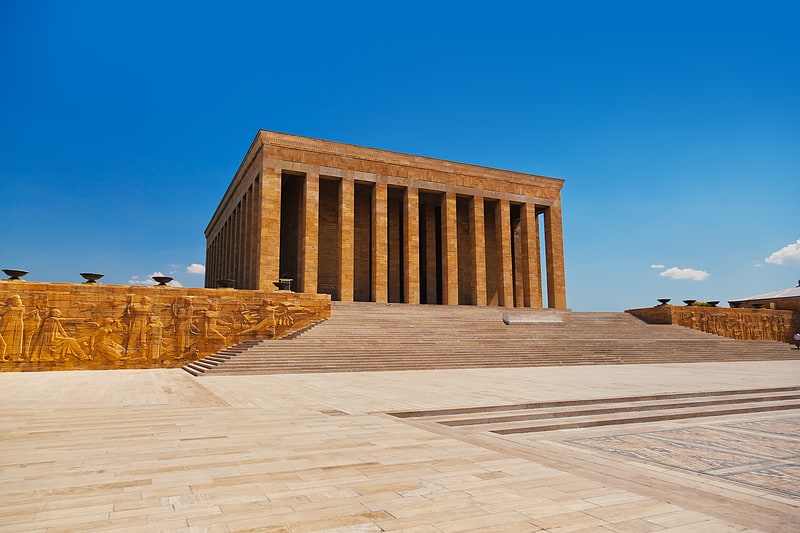
Mausoleum for former Turkish leader. Anıtkabir is the mausoleum of Mustafa Kemal Atatürk, the leader of the Turkish War of Independence and the founder and the first President of Republic of Turkey. It is located in Ankara and was designed by architects Professor Emin Onat and Assistant Professor Ahmet Orhan Arda, whose proposal beat 48 other entries from several countries in a competition held by the Turkish Government in 1941 for a monument for Atatürk.
The site is also the final resting place of İsmet İnönü, the second President of Turkey, who was interred there after he died in 1973. His tomb faces the Atatürk Mausoleum, on the opposite side of the Ceremonial Ground.
The mausoleum was depicted on various Turkish banknotes during 1966–1987 and 1997–2009 and was included in the Turkish Chamber of Civil Engineers list of the fifty civil engineering feats in Turkey, a list of remarkable engineering projects realized in the first 50 years of the chamber.[1]
Address: Mebusevleri Mh., 06570 Çankaya
Museum of Anatolian Civilizations
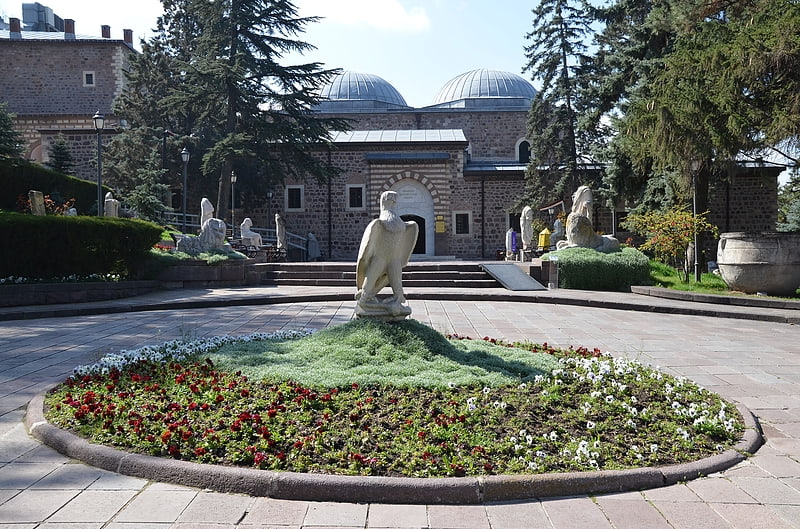
Also known as: Anadolu Medeniyetleri Müzesi
Archaeology displays in Ottoman building. The Museum of Anatolian Civilizations is located on the south side of Ankara Castle in the Atpazarı area in Ankara, Turkey. It consists of the old Ottoman Mahmut Paşa bazaar storage building, and the Kurşunlu Han. Because of Atatürk's desire to establish a Hittite museum, the buildings were bought upon the suggestion of Hamit Zübeyir Koşay, who was then Culture Minister, to the National Education Minister, Saffet Arıkan. After the remodelling and repairs were completed, the building was opened to the public as the Ankara Archaeological Museum.
Today, Kurşunlu Han, used as an administrative building, houses the work rooms, library, conference hall, laboratory and workshop. The old bazaar building houses the exhibits. Within this Ottoman building, the museum has a number of exhibits of Anatolian archeology. They start with the Paleolithic era, and continue chronologically through the Neolithic, Early Bronze, Assyrian trading colonies, Hittite, Phrygian, Urartian, Greek, Hellenistic, Roman, Byzantine, Seljuq and Ottoman periods. There is also an extensive collection of artifacts from the excavations at Karain, Çatalhöyük, Hacılar, Canhasan, Beyce Sultan, Alacahöyük, Kültepe, Acemhöyük, Boğazköy (Gordion), Pazarlı, Altıntepe, Adilcevaz and Patnos as well as examples of several periods.
The exhibits of gold, silver, glass, marble and bronze works date back as far as the second half of the first millennium BC. The coin collections, with examples ranging from the first minted money to modern times, represent the museum's rare cultural treasures.
Museum of Anatolian Civilizations reaching the present time with its historical buildings and its deeply rooted history was elected as the first "European Museum of the Year" in Switzerland on April 19, 1997.[2]
Address: Kale Mh., Gözcü Sk. No:2, 06240 Ulus/Altındağ
Erimtan Archaeology and Arts Museum
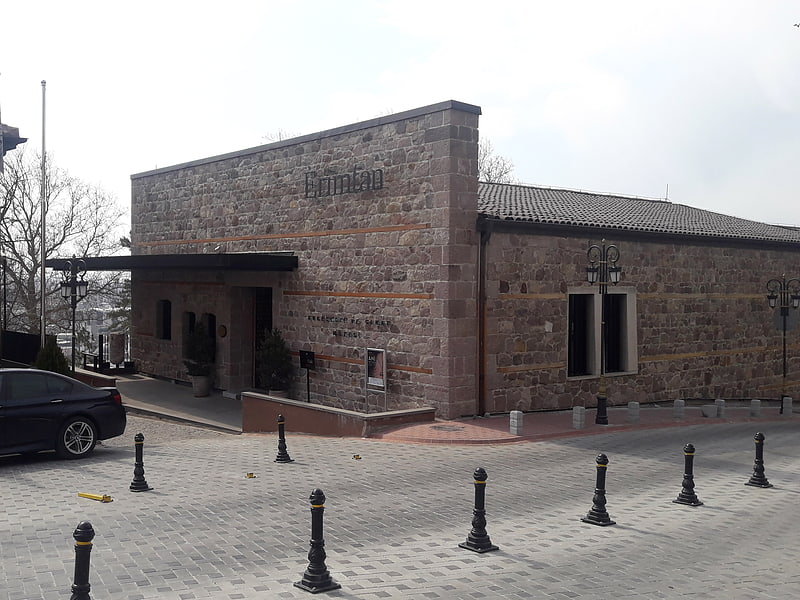
Museum in Ankara, Turkey. Erimtan Archaeology and Arts Museum is an archaeology museum and music venue in Ankara, Turkey.[3]
Kocatepe Mosque
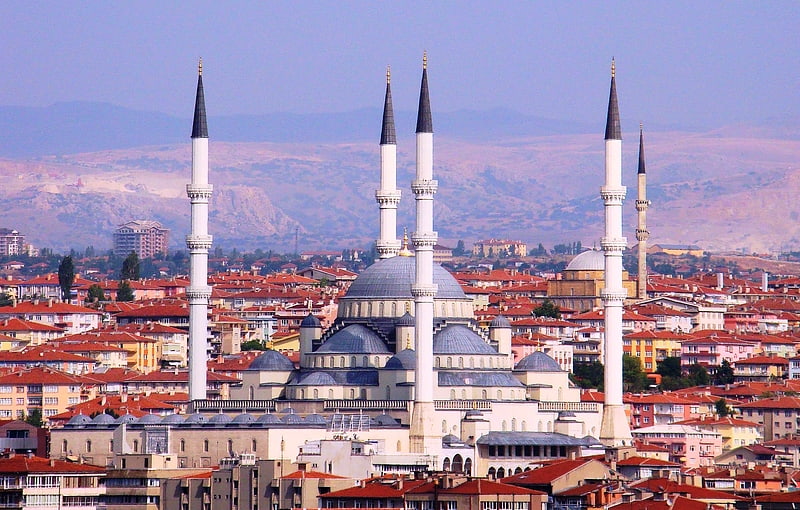
Also known as: Kocatepe Camii
Massive mosque in the city's center. The Kocatepe Mosque is the largest mosque in Ankara, Turkey. It was built between 1967 and 1987 in the Kocatepe quarter in Kızılay, and its size and prominent situation have made it a landmark that can be seen from almost anywhere in central Ankara.[4]
Address: Kültür Mahallesi, Dr. Mediha Eldem Sk. No:67, 06420 Çankaya
Çankaya Mansion

Also known as: Çankaya Köşkü
The Çankaya Mansion is the official residence of the vice president of Turkey, and previously the official residence of the president of Turkey from 1923 to 2007.
The property is located in the Çankaya district of Ankara, which lends its name to the palace. The Çankaya Campus is home to several buildings, including the mansion and stretches over 438 acres of land with its unique place in the history of the Turkish Republic. The Çankaya Campus houses Atatürk's Museum Mansion, the Çankaya Mansion, the office of the Chief Aide-de-Camp, the Glass Mansion, State Supervision Council, the Financial Affairs and Preservation Directorate buildings, Press Conference Hall, reception halls, fire department building, social facility, garage, greenhouse, artificial turf sports area, tennis court and employee lodgings.
Since the transition to a presidential system in 2018, the Çankaya Mansion has served as the official residence of the Vice President of Turkey.[5]
Address: Ankara, Çankaya Neighborhood, Çankaya Street, Çankaya District, Ankara, 06550
Roman Baths of Ankara
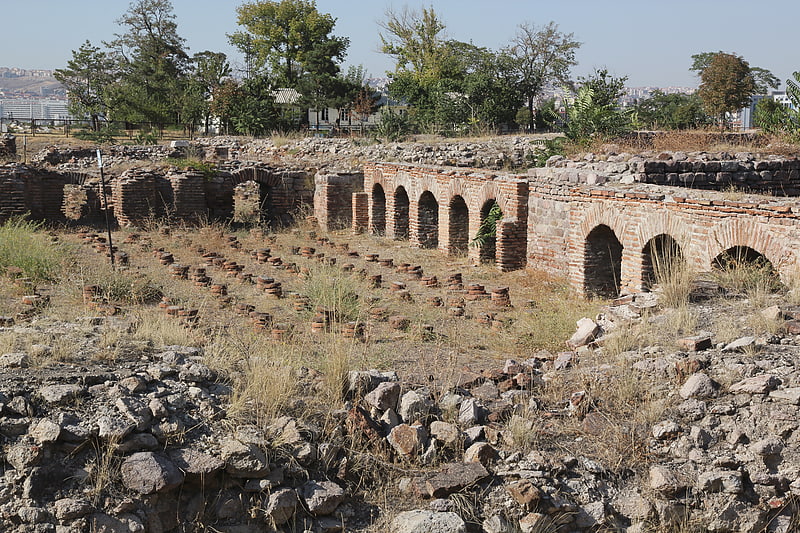
Also known as: Ankara Roma Hamamı
Museum in Ankara, Turkey. The Roman Baths of Ankara are the ruined remains of an ancient Roman bath complex in Ankara, Turkey, which were uncovered by excavations carried out in 1937-1944, and have subsequently been opened to the public as an open-air museum.[6]
Address: Cankiri Ave., Ankara
Presidential Complex
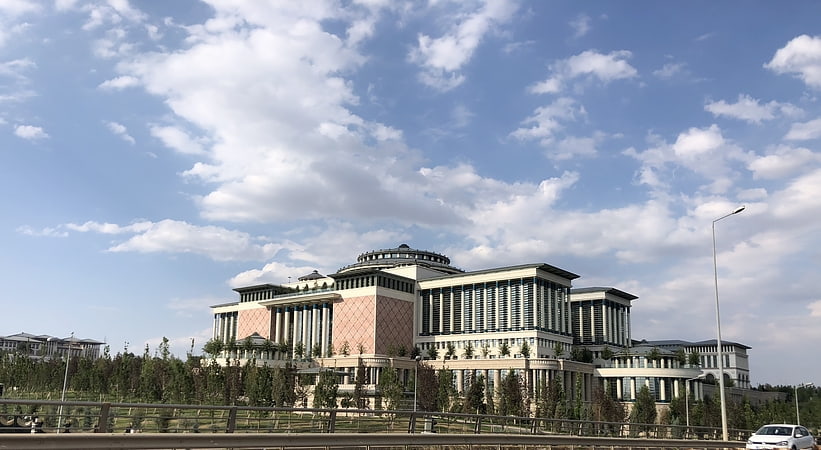
Also known as: Cumhurbaşkanlığı Sarayı
Government office in Ankara, Turkey. A presidential palace is the official residence of the president in some countries. Some presidential palaces were once the official residences to monarchs in former monarchies that were preserved during those states' transition into republics. Some other presidential palaces were once the official residencies to governors in former colonies or subnational divisions that were preserved during their transition to independent states. The Rastrapati Bhavan in India is the world's largest Presidential Palace.[7]
Güvenpark

Park in Ankara, Turkey. Güvenpark or Güven Park, is an urban public park located adjacent to the Liberty Square in the Kızılay neighborhood of Ankara in Turkey. Established in the 1930s as part of the green belts proposed in the urban plan of the rapid growing capital, the park is noted for its "Güven Monument". In mid March 2016, a bomb explosion close to it caused the death of more than 30 people while over 100 were injured.[8]
Address: Kızılay Mah., Ankara
Ankara Vakıf Museum
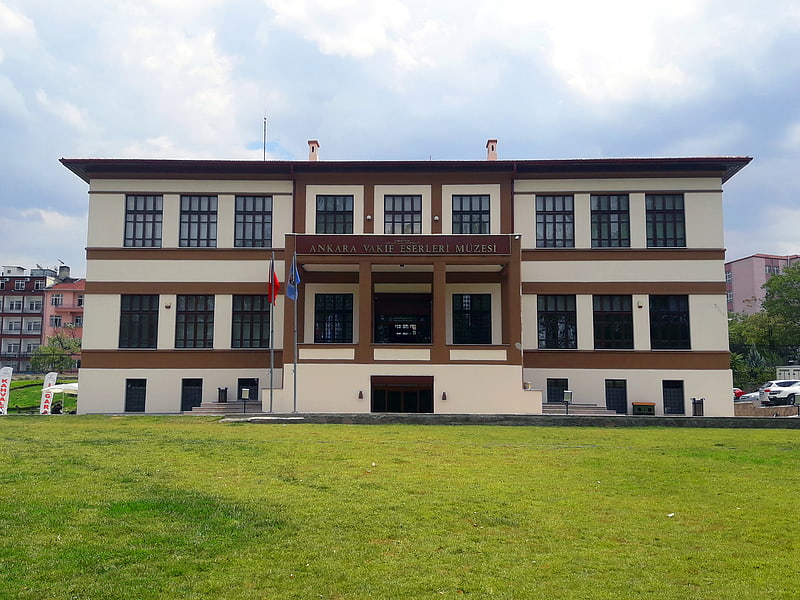
Vakıf Museum is an ethnography museum in Ankara, Turkey exhibiting endowed articles.
The museum is on Atatürk Boulevard in Ankara. It is to the south of Melike Hatun Mosque and to the east of Gençlik Parkı, the largest park of Ankara. Some of the other museums of Ankara such as Stamp Museum, Ethnography Museum of Ankara and State Art and Sculpture Museum are nearby. The museum building was built as a school building. It is an example of First national architectural movement of Turkey. Between 1928 and 1941 it was used by the School of Law and after 1941, it was used as the Girls’ vocational school. In 2004 it was restored and on 7 May 2007 it was opened as a museum.[9]
Kuğulu Park

Park in Ankara, Turkey. Kuğulu Park is a 1 ha public park in the Çankaya neighborhood of Ankara, Turkey. The park is known for its swans, but also has ducks and geese. Its pond was renovated in 2012.
In June 2013 Kuğulu's waterfowl (35 birds) were evacuated temporarily to protect them from tear gas exposure during the 2013 Turkish protests. The park was a major meeting point for protestors, and saw a Taksim Gezi Park-style encampment.
The City of Vienna gave the park a gift of swans.[10]
Address: Kuğulu Park, Ankara
Stamp Museum
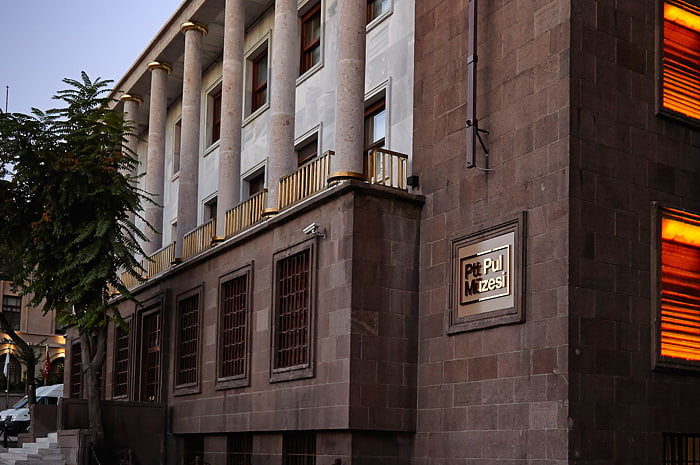
Stamp Museum is a museum in Ankara, Turkey.[11]
Address: Doganbey Mah. Ataturk Blv. No:8, 06107 Ankara
War of Independence Museum
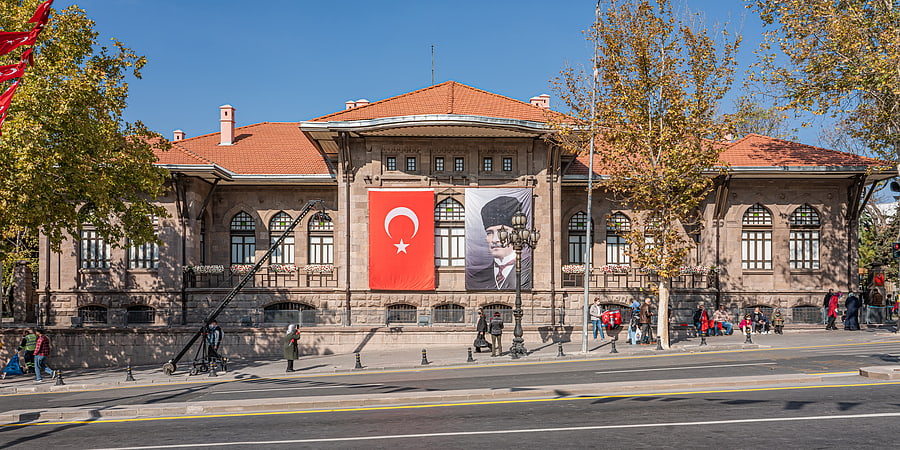
Also known as: Kurtuluş Savaşı Müzesi
Museum in Ankara, Turkey. The War of Independence Museum, housed in the first Turkish Grand National Assembly building in the Ulus district of Ankara, Turkey, displays important photographs, documents and furniture from the Turkish War of Independence.[12]
Address: Fevzi Pasa Mah. Cumhuriyet Bulv. No: 1, 06050 Ankara
Devlet Mezarlığı
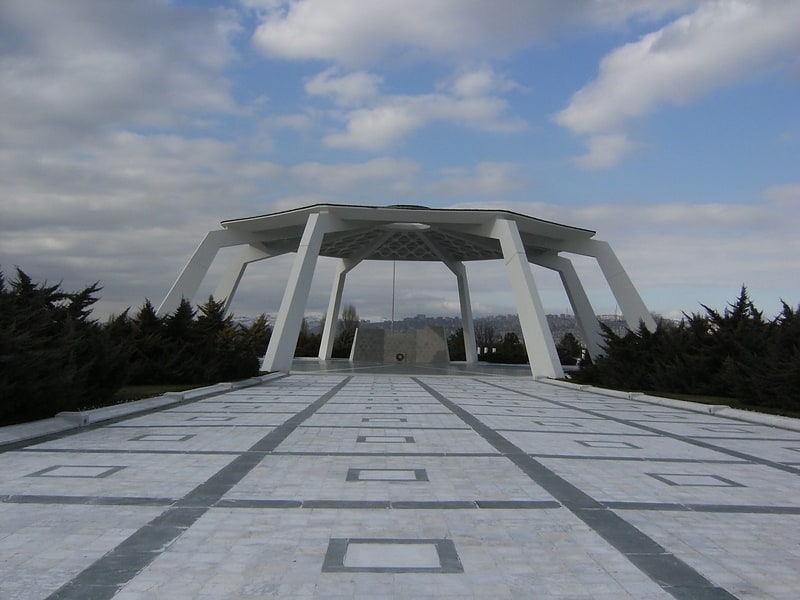
Cemetery in Ankara, Turkey. The Turkish State Cemetery is a national and military cemetery in Ankara, Turkey, containing the graves of the presidents of Turkey and the high-ranked, close companions-in-arms of Mustafa Kemal Atatürk, the founder of the Republic of Turkey, in the Turkish War of Independence.[13]
Victory Monument
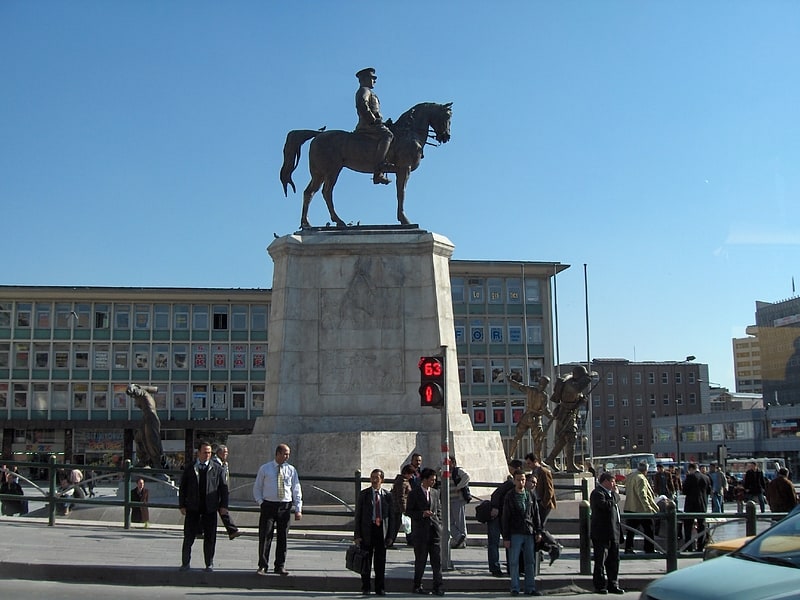
Also known as: Ankara Zafer Anıtı
Sculpture by Heinrich Krippel. Victory Monument is a monument in Ankara, Turkey.[14]
Address: Atatürk Blv., Ankara
Temple of Augustus and Rome
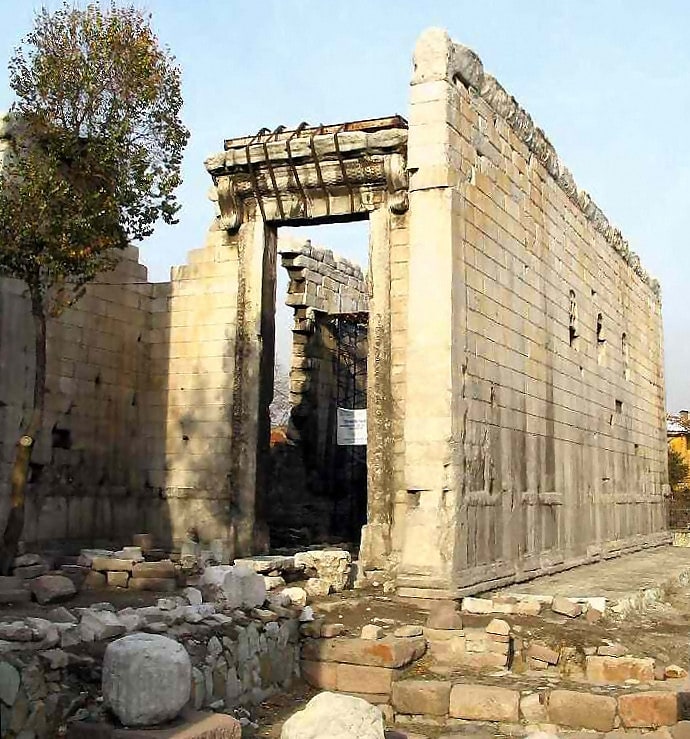
Also known as: Monumentum Ancyranum
Historical place in Ankara, Turkey. Temple of Augustus and Rome is an augusteum located in Altındağ district of Ankara. It is thought to have been built around 25–20 AD. Besides being one of the most important Roman period ruins in the city, it is also known for Monumentum Ancyranum. This is an inscription about the works of Augustus, who was considered the first Roman emperor, throughout his life. It is the most complete copy of Res Gestae Divi Augusti that has survived to the present day, as the original in Rome had disappeared.[15]
Address: Sarıbağ Sk, Ankara
Ankara Castle
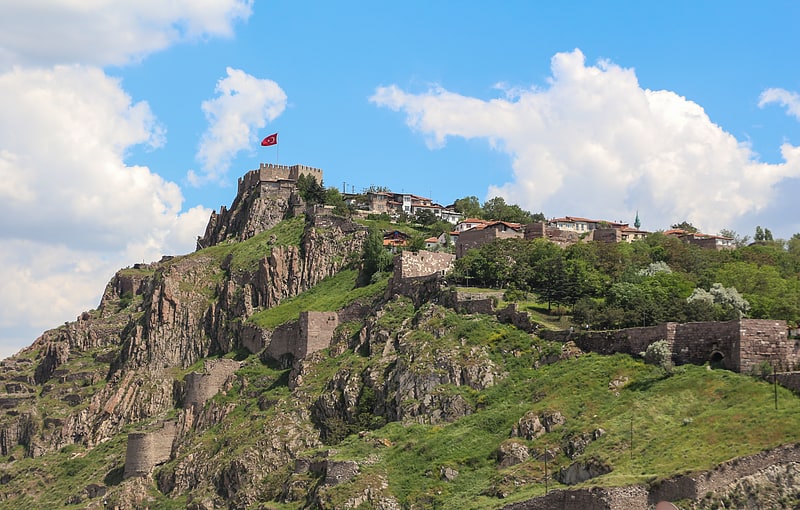
Also known as: Ankara Kalesi
Fortification in Ankara, Turkey. Ankara Castle is an historic fortification in the city of Ankara, Turkey, constructed in or after the 7th century. The earliest fortification on the site was constructed in the 8th century BC by the Phrygians and rebuilt in 278 BC by the Galatians. The castle was rebuilt or renovated under the Roman, Byzantine, Seljuk, and Ottoman empires.[16]
Address: Altındağ, Gözcü Sk, 06000 Ankara
METU Library
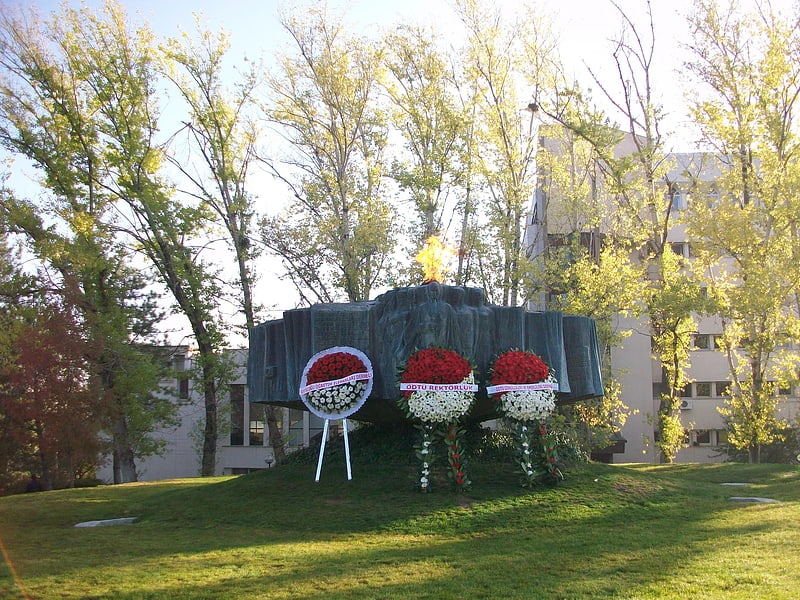
The Atatürk Monument is a Turkish monument dedicated to Mustafa Kemal Atatürk, the founder of modern Turkey, located at the Ankara Campus of the Faculty of Arts and Sciences in Middle East Technical University. The competition for the monument started in 1965, in which Şadi Çalık came in first place. Çalık completed the monument in 1966. The bronze monument is Turkey's first abstract monument dedicated to Atatürk.
On November 10, 2016, the death day of Atatürk, a commemoration was held by METU staff and students in front of the monument[17]
Eymir Gölü
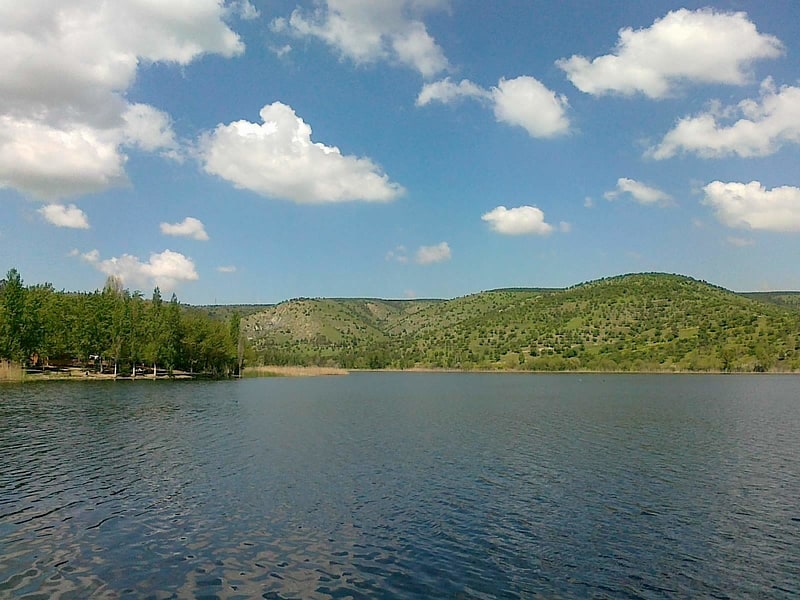
Lake in Turkey. Lake Eymir is a small lake in Ankara Province, Turkey. According to notes of Seyyah Kandemir published by the governorate of Ankara in 1932, the lake was named after a Turkmen tribe named Eymür.[18]
Address: Eymir Gölü, Ankara
Hacı Bayram Mosque
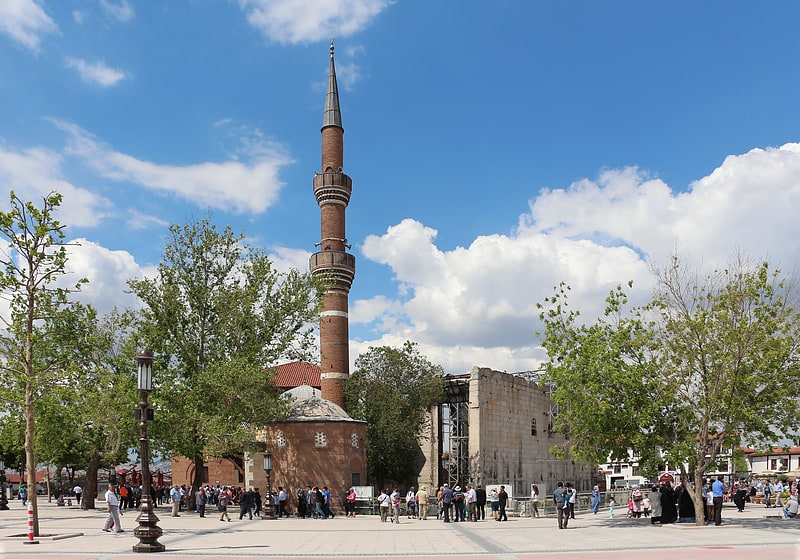
Also known as: Hacı Bayram Camii
Mosque in Ankara, Turkey. Hacı Bayram Veli Camii is a mosque in old Ankara. Along with Kocatepe Mosque it is one of the best known mosques in Ankara. Hacı Bayram Mosque was built during the Ottoman Empire period. It was named after the Turkish Sufi and poet Hacı Bayram-ı Veli on behalf of the latter. Hacı Bayram Mosque is one of the touristic places of Ankara. The site was added in 2016 to the tentative list of UNESCO World Heritage Sites in Turkey.[19]
Address: Hacı Bayram Mahallesi, Sarıbağ Sk. No:13, 06050 Altındağ
TCDD Open Air Steam Locomotive Museum
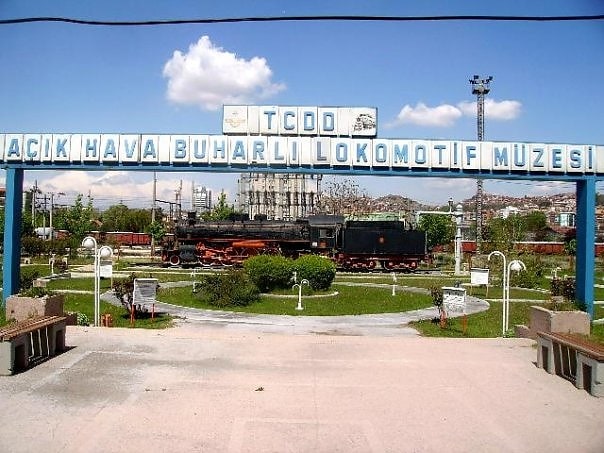
Also known as: TCDD Açık Hava Buharlı Lokomotif Müzesi
Museum in Ankara, Turkey. The TCDD Open Air Steam Locomotive Museum is a railroad museum in Ankara, Turkey, which focuses on the history of steam locomotives that operated on the Turkish State Railways. The museum was originally located in a park adjacent to Ankara Central Station, and when the property was needed for the station's enlargement project in 2014, the museum was moved to the current location near Wonderland Eurasia. The museum is owned and operated by the Turkish State Railways, who also manages the Ankara Railway History Museum, as well as Atatürk's Car and Railway Art Museum.[20]
Address: Celal Bayar Blvd, Maltepe, Ankara
Gençlik Parkı
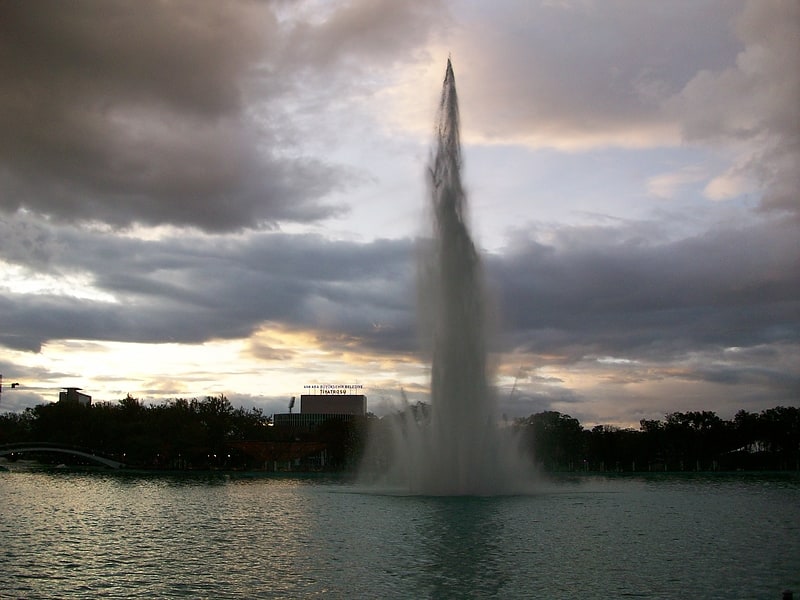
Gençlik Parkı is a public park in Ankara, Turkey.[21]
Address: Doğanbey Mah. Ulus, Ankara
State Art and Sculpture Museum

Also known as: Ankara Devlet Resim ve Heykel Müzesi
Museum with local art and sculptures. The State Art and Sculpture Museum is a museum dedicated to fine arts and sculpture in Ankara, Turkey. It was designed in 1927 by architect Arif Hikmet Koyunoğlu and built between 1927 and 1930 as the Türkocağı Building, upon the direction of Mustafa Kemal Atatürk, the founder and first President of Turkey. It is located close to the Ethnography Museum and houses a rich collection of Turkish art from the late 19th century to the present day. There are also galleries for guest exhibitions.
The museum was reopened after the restoration of the building in 1980. Today, the museum is a center of art where the most outstanding works of the artists who played important roles in the development of Turkish painting and sculpture are exhibited. In addition to the collections of art works reflecting the formation and development periods of Turkish plastic arts, and its classification, and to the Library of Plastic Arts which fills the gap in this field (enriched every year by the donations of domestic or foreign resources, or by new purchases), the archives of Turkish artists satisfactorily respond to the needs of researchers working in these fields.
The protection of the works of fine arts, which is one of the most important responsibilities of the museum beside training, is done by employing a method particularly developed to ensure the most satisfactory results when dealing with the problems arising from temperature, humidity and sorting difficulties. Any damage due to aging which may occur in spite of all protection measures are restored by experts in the special restoration unit which has been set up as a separate division within the museum.
During the restoration of the building in 1980, and in the following years, another important point on which considerable stress was laid is the construction of workshops of painting, sculpture and ceramics, which serve artists, both amateur and professional. The museum was again restored in 2011 to increase the exhibition spaces, restore the roof as well as other security measures.
As for the security measures, the whole building is furnished with closed-circuit TV, ultrasonic and firealarm systems for controlling all parts of the museum.
In addition to the workshop where painting and traditional printing courses are held (and demanded by the public beyond the capacity of the museum), special workshops for Turkish ornamental arts, ceramic, and sculpture will be opened in the near future.
Exhibitions of painting, sculpture, ceramic, printing arts and photography that are programmed to take place in Turkey within the framework of international cultural agreements, are exhibited in the three galleries reserved for periodical exhibitions; thus, the art works of foreign countries are made known to the Turkish public. In addition, exhibitions of Turkish artworks selected from the permanent collection of the museum are organized in foreign countries, within the framework of international cultural agreements. Besides these exhibitions, retrospective exhibitions organized by the General Directorate of Fine Arts; individual exhibitions and competitive exhibitions are among the other activities of the museum.
In the historical hall which has been transformed to its original design during the restorations, different kinds of activities such as concerts, theatrical performances and movie projections take place.
Serving to public with its modern cafeteria, sales outlet and audio system, the institution goes beyond an exhibition place for old artwork; comprising all attributes of a modern museum of arts.[22]
Address: Türkocağı Sk., Ankara
Atakule
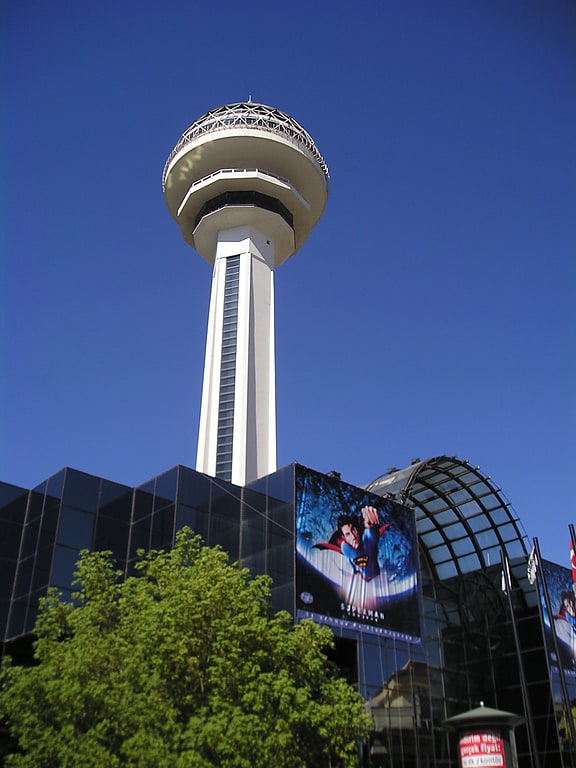
Tower in Ankara. Atakule is a 125 m high communications and observation tower located in the Çankaya district of central Ankara, Turkey, and is one of the primary landmarks of the city. As the district of Çankaya is itself on a hill, the tower can be spotted from almost anywhere in the city during clear days. The tower's design came from architect Ragıp Buluç and the construction works lasted from 1987 to 1989. The top section of the tower houses an open terrace and a revolving restaurant named Sevilla, which makes a full 360 degree rotation in one hour. On top of Sevilla is another restaurant, Dome, which is non-revolving and located directly under the cupola. Under the terrace is a café, named UFO. The bottom structures house a shopping mall and several indoor and outdoor restaurants. The tower was opened on 13 October 1989 by President Turgut Özal. Due to the ongoing rebuilding of the shopping mall, the tower is now closed to visitors.
In Turkish, the word ata means "ancestor" (or "father" in Old Turkic), which is often used as a nickname (Ata) for Mustafa Kemal Atatürk, the founder and first President of the Republic of Turkey; while the Turkish word kule means "tower".[23]
Address: Çankaya Mah. Çankaya Cad., 06680 Ankara
Ethnography Museum of Ankara
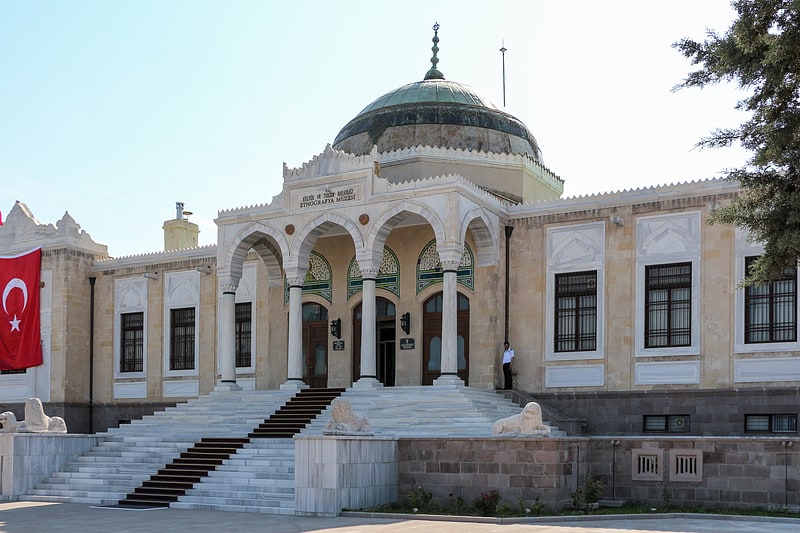
Also known as: Ankara Etnografya Müzesi
Museum in Ankara, Turkey. The Ethnography Museum of Ankara is dedicated to the cultures of Turkic civilizations. The building was designed by architect Arif Hikmet Koyunoğlu and was built between 1925 and 1928. The museum temporarily hosted the sarcophagus of Mustafa Kemal Atatürk from 1938 to 1953, during the period of the construction of Anıtkabir, his final resting place.[24]
Address: Hacettepe Mahallesi, Turkocagi Sokak No: 4, 06230 Ankara
Ahmet Hamdi Akseki Camii

Mosque in Ankara, Turkey. The Ahmet Hamdi Akseki Mosque is a mosque in Ankara, Turkey. The mosque is among the largest in Turkey.[25]
Ulus Square
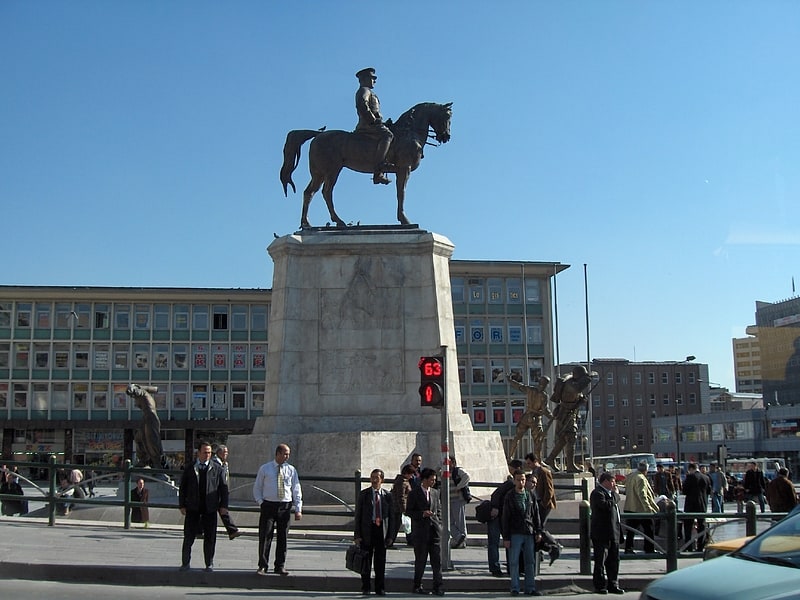
Also known as: Ulus Meydanı
Ulus Square is a square in Ankara, Turkey. "Ulus" is the Turkish word for "Nation".[26]
Melike Hatun Mosque

Mosque. Melike Hatun Mosque is a mosque in Ankara, Turkey. It was opened to service on 27 September 2017.[27]
Zafer Square
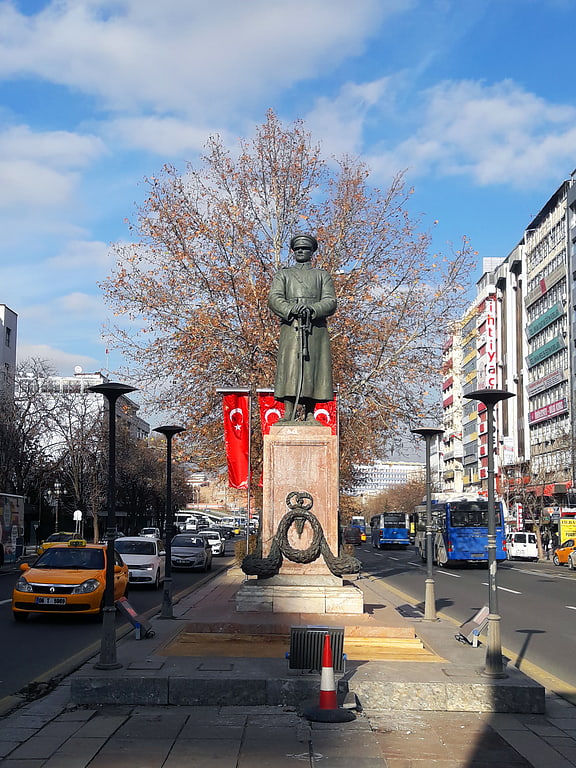
Zafer Square is a square in Ankara, Turkey. Zafer means "victory". Although it is traditionally called square it is no longer a junction point.
The square is on Atatürk Boulevard at 39°55′29″N 32°51′17″E in Çankaya secondary municipality. It is between Kızılay Square and Sıhhiye Square. An underground bazaar of bookstores is to the east and an officers' club is to the west of the square. At the center of the Atatürk Boulevard there is a statue of Mustafa Kemal Atatürk (1881–1938), the founder of the Turkish Republic in marshal uniform. The monument was commissioned to Pietro Canonica, an Italian sculptor, who had also created several other monuments in Turkey. It was erected on 4 November 1927. The building material is bronze with a marble base. The height of the base is 2 m (6 ft 7 in) and the height of the statue 1.75 m (5 ft 9 in).[28]
Ankara Opera House
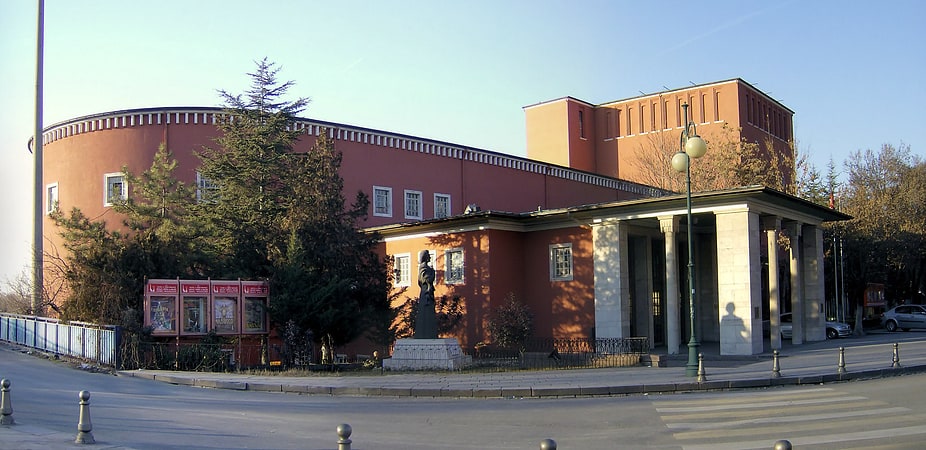
Also known as: Ankara Opera Sahnesi
Building in Ankara, Turkey. Ankara Opera House of the Turkish State Opera and Ballet is the largest of the three venues for opera and ballet in Ankara, Turkey, the other two being Leyla Gencer Sahnesi in Ostim and Operet Sahnesi in Sıhhiye.
The building was originally designed by the Turkish architect Şevki Balmumcu as an exhibition center, who came first in an international competition for the project in 1933. It was later converted into an opera house by the German architect Paul Bonatz, and started serving this function on April 2, 1948.
The same building also serves as a theatre venue for the Turkish State Theatres under the name Büyük Tiyatro. The construction of a new main opera house for Ankara, in the vicinity of the original and of considerably larger capacity, is underway since 2005.[29]
Abdi İpekçi Parkı

Abdi İpekçi Park is an urban park in Ankara's Sıhhiye neighborhood. It was established in 1981 in honor of the assassinated Milliyet journalist Abdi İpekçi. Covering an area of 36,800 m2, the park has the usual geographic features and incorporates a sculpture featuring a hand opened towards the sky.[30]
Address: Sağlık Mah., Ankara
Aslanhane Mosque
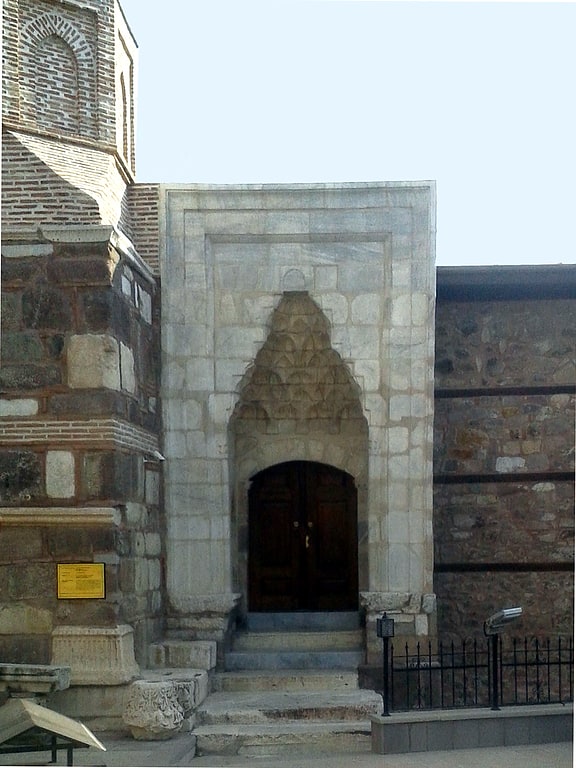
Also known as: Arslanhane Camii
Mosque in Ankara, Turkey. Aslanhane Mosque is a 13th-century mosque in Ankara, Turkey.[31]
Address: Kale Mh., Kale Sk., 06250 Altındağ
Göksu Parkı

Park in Turkey. Göksu Park is a public park in Ankara, Turkey. Göksu Park is in Eryaman, a neighbourhood in the district of Etimesgut in Ankara. The park area is 50.8 ha. It was an unneglected lake until 2003. In 2003, the lake was taken care of by the Municipality of Ankara and Municipality of Etimesgut and the park was opened that same year.[32]
Address: Eryaman 2. Etap, 06793 Etimesgut
Hittite Sun Course Monument
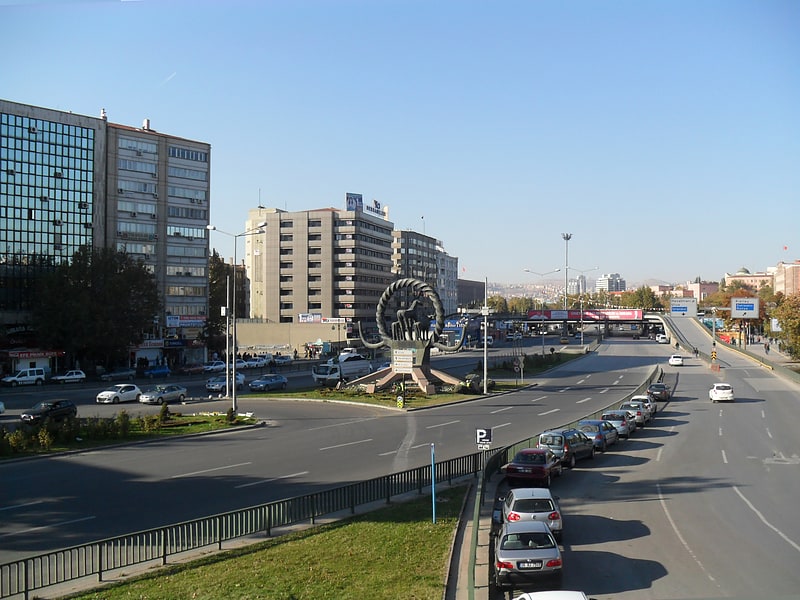
Also known as: Hitit Güneş Kursu Anıtı
The Hittite Sun Disc Monument is a memorial dedicated to Hittites created by sculptor Nusret Suman, and placed in the Sıhhiye Square in 1978.[33]
Maltepe Camii

Mosque in Ankara, Turkey. Maltepe Mosque is a mosque in Ankara, Turkey. Along with Kocatepe Mosque, it is one of the best known mosques in Ankara.[34]
Address: Maltepe Mahallesi, Şht. Gönenç Cd. No:3, 06570 Çankaya
Atatürk's Residence and Railway Museum
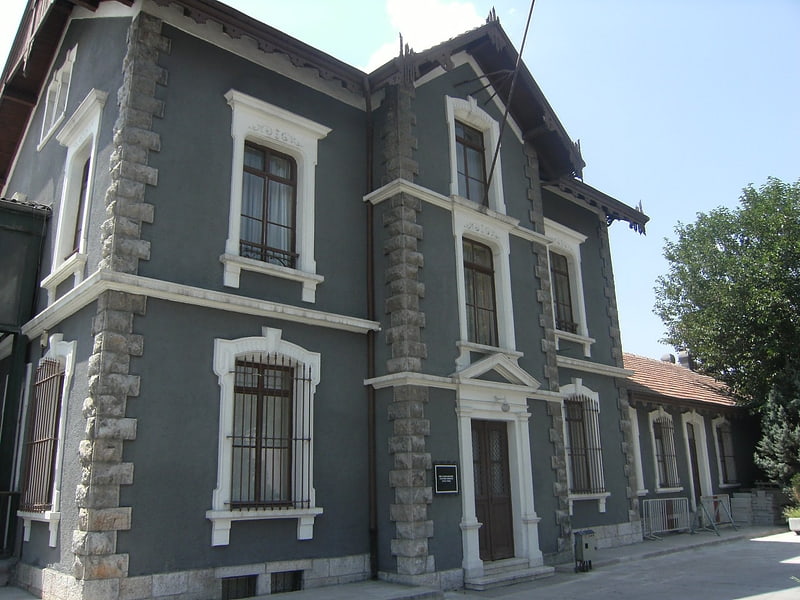
Atatürk's Residence and Railway Museum is a national historic house and railway museum in Ankara, Turkey. It was originally the management building of the Turkish State Railways. Mustafa Kemal Atatürk used it as a residence and headquarters during the Turkish War of Independence.[35]